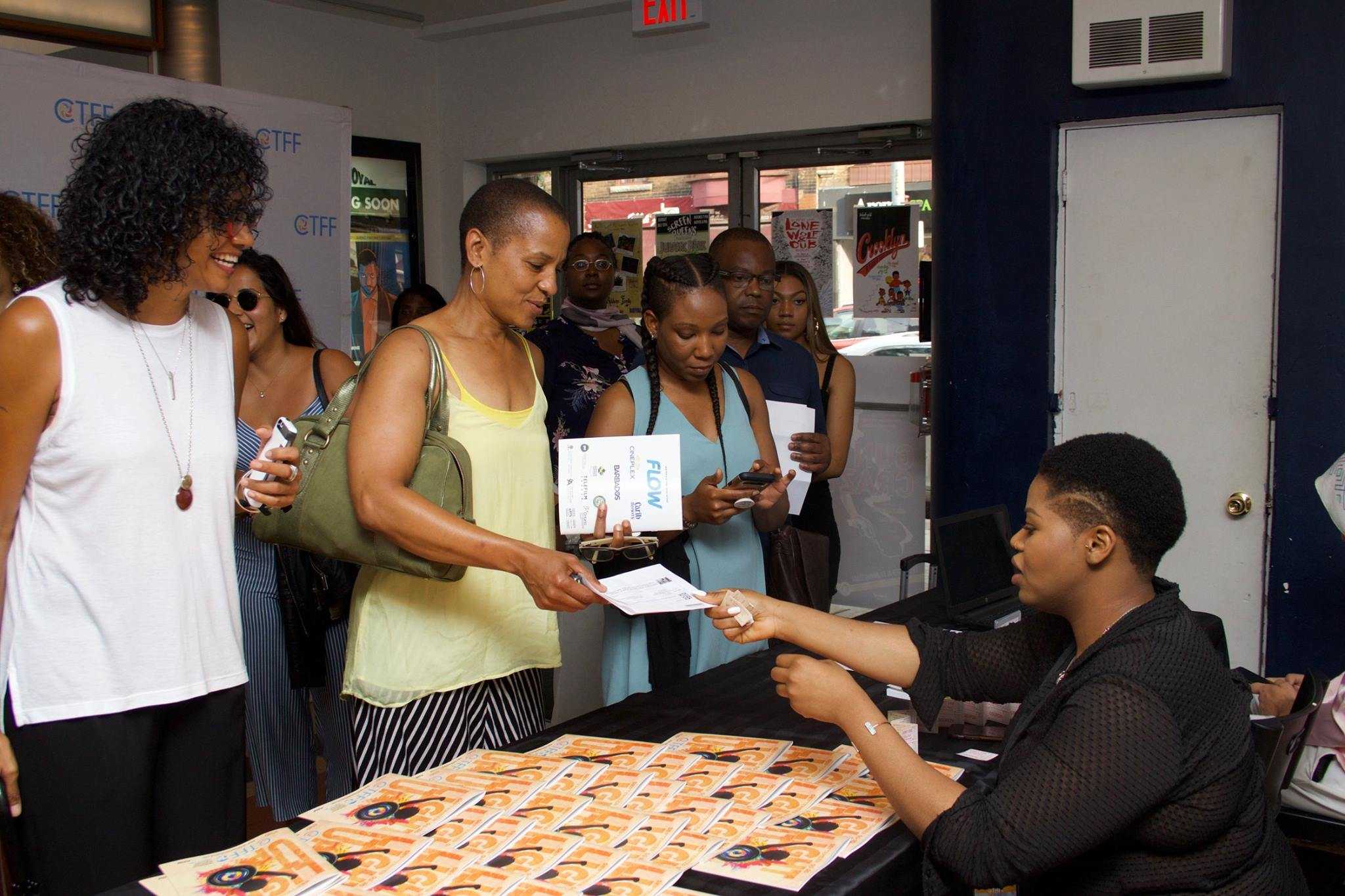on
BY: LEANNE BENN
Light It Up! That’s the theme for this year’s Caribbean Tales International Film Festival. This is the 13th year that the CTFF returns to the City of Toronto and the 9th year for their wildly successful incubator program, which was officially sponsored in 2017 by FLOW.
FLOW as the main sponsor, along with other festival sponsors, including Cineplex, OCAD University, Ontario Arts Council and New College at the University of Toronto with others, are helping to make the 2018 festival a success.
This year’s festival will run from Sep 5th – 20th and for those unfamiliar with the CTFF, it is an organization that celebrates the talents and hard work of various Caribbean filmmakers across the Caribbean diaspora. It is a creative and dynamic mix of multi-ethnic stories and various cultures. The company is all about encouraging intercultural understanding through creative film programs and events.
The Executive Director and CEO of Caribbean Tales is Frances-Anne Solomon. Solomon and her successful creative team came up with the theme for this year’s work. Light It Up has been described as a call to action and a call to change. The associate festival Director, Diana Webly, in an official press release, described it as this, “Our festival theme this year is ‘Light it Up.’ It’s a call to action, a call to arms, a call to change. A call that’s been ringing out for a long time, and now Caribbean filmmakers are answering that call to force.” Essentially this change is the change we want to see reflected in the world where Caribbean filmmakers can showcase their work and share their vision and talents all around the world and not just in the Canadian and Caribbean market.
With the opportunity to attend the official media launch of the CTFF on July 5th at the Royal Cinema, members of the media were given a sneak peek at some of the exciting work that’s ready to be celebrated in 2018.
The night featured a special screening of Green Days by The River, directed by Michael Mooledhar-Trinidad and Tobago -2017. This was the Canadian premiere of this successful Trinidadian tale that was also screened at the 2017 Trinidad and Tobago Film festival, before going on a world tour.
The movie is based on the novel by beloved Trinidadian writer Michael Anthony and is set in 1952. The movie was accurately able to bring cinematic life to the book that has long been adored by many Caribbean school children. The coming of age story is seen through the eyes of a fifteen-year-old boy while he deals with becoming a man, friendships, relationships, issues of class and even racial undertones between Indians and Africans living in rural Trinidad. The film was able to capture the scenic simplicity of Trinidad and Tobago in its natural state which also seems very familiar and home-like to many Caribbean viewers in the audience.
Because of these simple reasons and more, many in the Caribbean diaspora should explore some of the upcoming films at this year’s festival. Entries this year include 10 feature films and 20 shorts. Examples include Not My Neighbourhood- Kurt Orderson- Sotuh Africa-2016. Hero -Frances Anne- Solomon- Canada/ Trinidad/ Ghana/ UK – 2018. Hall- Rommell Hall- Barbados-2018. There are various short films as well which will be shown throughout including, filmmakers from Trinidad and Tobago, Canada, Guyana, Argentina, Chile, Costa Rica, Curacao, Haiti, and the USA all coming together to present their content.
If you cannot wait till the festival premieres in September, there will still be lots of events happening in and around the city such a special screening of Cinderella at the Regent Park Film Festival on July 11th and a screening of Bazodee starring Machel Montano on August 5th at Harbourfront Cantre Island Soul Festival. These films and other special events before the premiere are free to the public. The opening gala on September 5th will highlight Solomon’s Film Hero, as well as two shorts Queen of Hearts-Kyisha Williams, Lindsey Addawoo-Canada-2017 and Black Doll–Akley S. Olton–Canada 2017.
In the middle of all the festival screenings, there will also be a ‘Big Pitch ‘Breakfast a the TIFF lightbox and this is where Caribbean Filmmakers can network and pitch their series, the event is sponsored by FLOW and presented by TIFF and TELEFILM Canada. The Big Pitch Breakfast draws back to the Caribbean Tale Incubator program, which is a year-long intensive, training program-featuring workshops and online training to ensure filmmakers produce strong and sustainable content for a global audience. So, as a filmmaker or as an audience member interested in learning about diverse Caribbean content, the CTFF 2018 festival is the perfect time to get started. For more information be sure to visit CaribbeanTalesFestival.com.
Stay in the loop with exclusive news, stories, and insights—delivered straight to your inbox. No fluff, just real content that matters. Sign up today!
Joyful youth leads Junior Carnival launch












